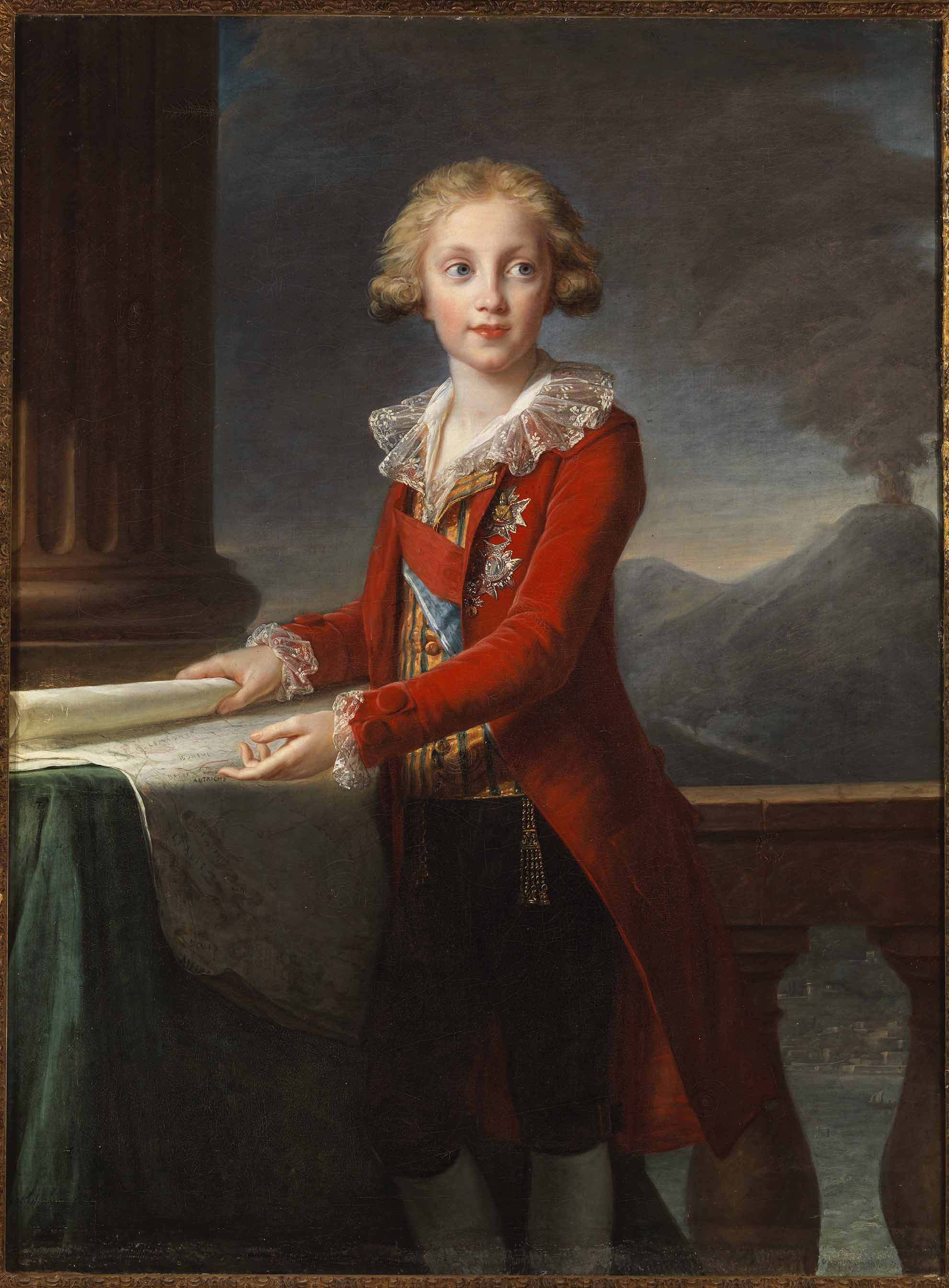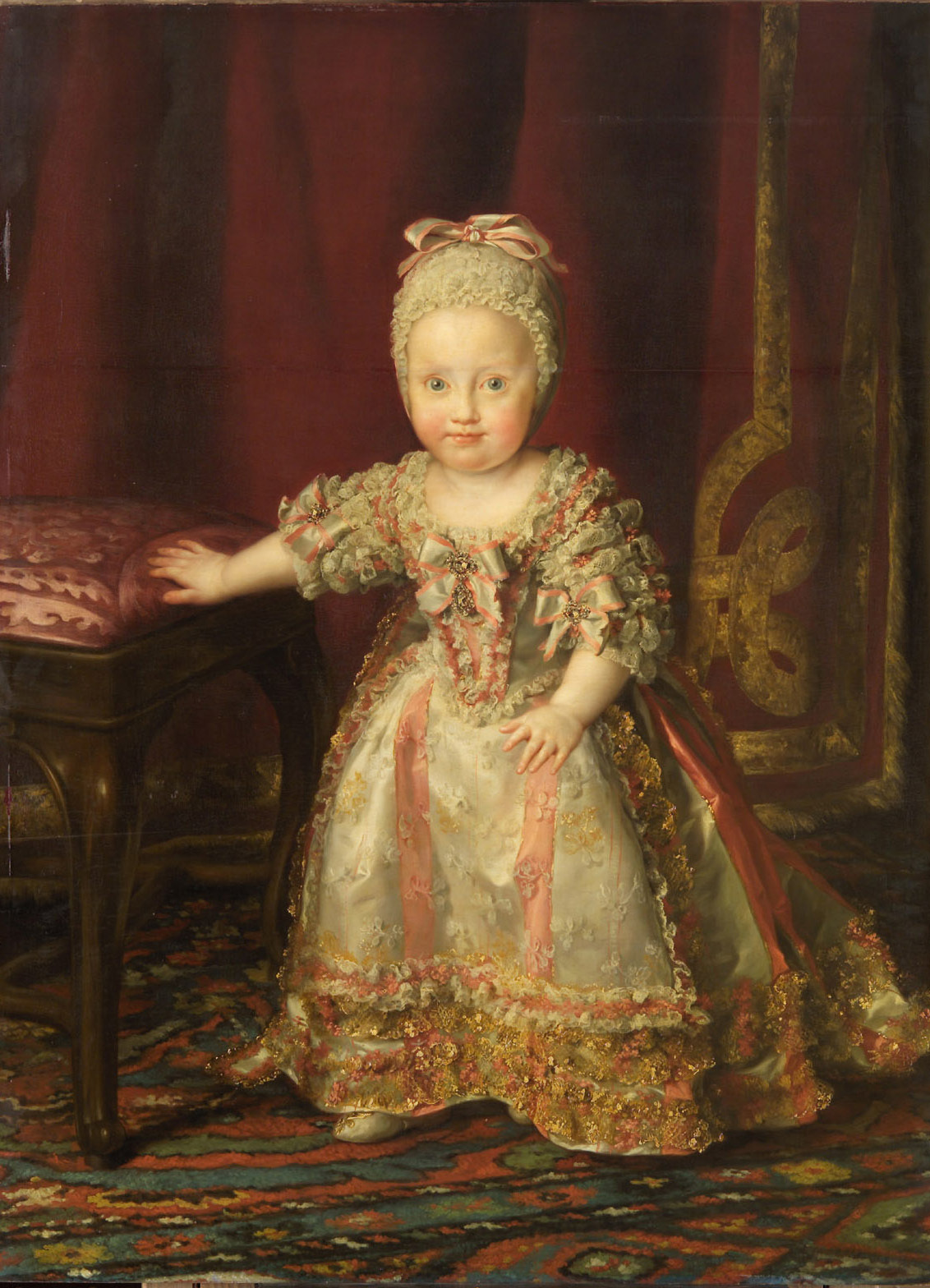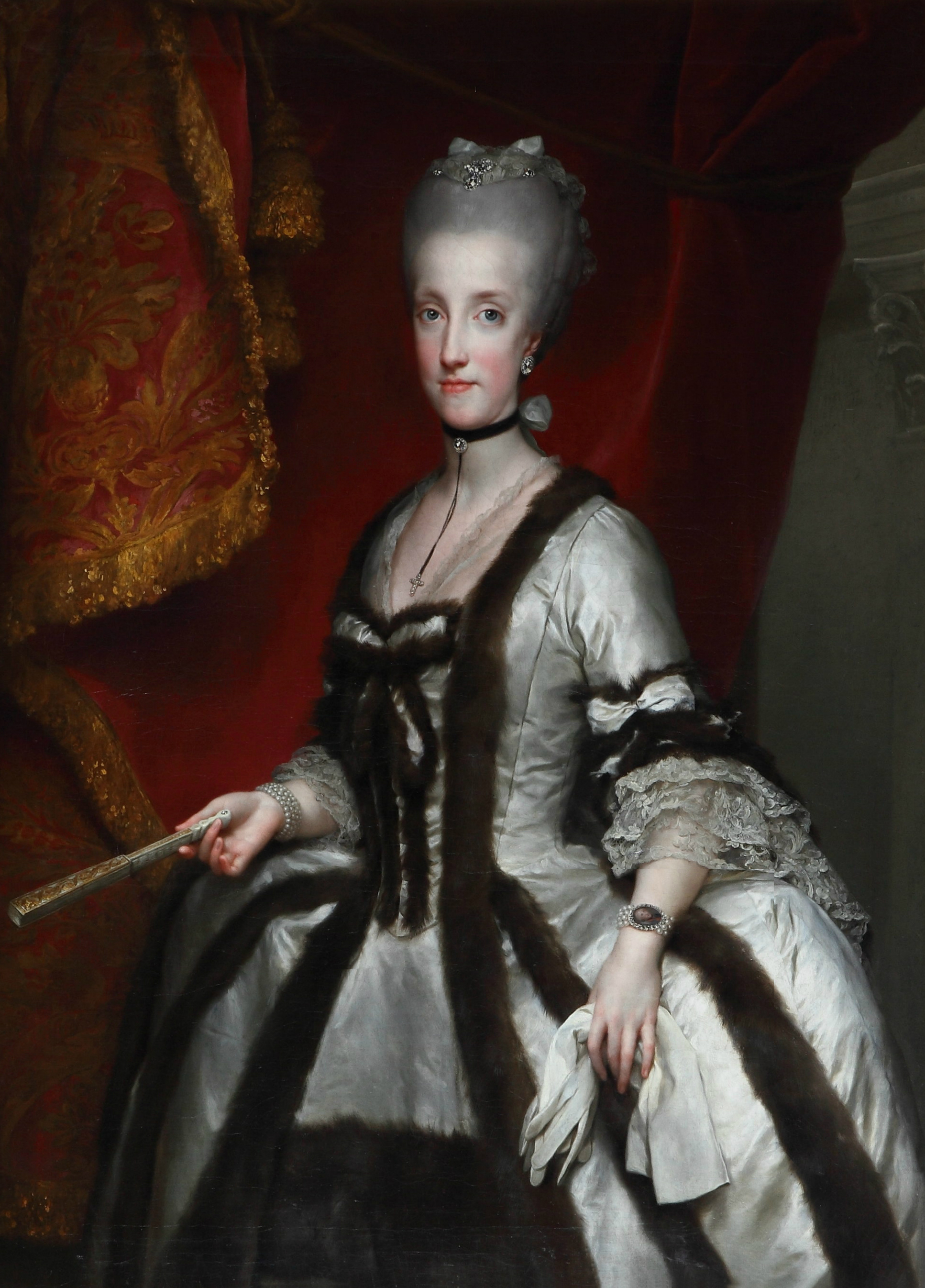|
Archduchess Maria Clementina Of Austria
Maria Clementina of Austria (24 April 1777 – 15 November 1801) was an Austrian archduchess and the tenth child and third daughter of Leopold II, Holy Roman Emperor and Maria Luisa of Spain. In 1797 she married her first cousin Prince Francis, Duke of Calabria, heir to the kingdoms of Naples and Sicily. She was modest, well educated and kind, becoming popular in her adoptive country.Acton, ''The Bourbons of Naples'', p. 463 Afflicted with frail health, she died of tuberculosis, age twenty four. Her only surviving child was Princess Caroline, Duchess of Berry. Early life Archduchess Maria Clementina was born at the Villa del Poggio Imperiale, then located in the Grand Duchy of Tuscany, which had been ruled by her father Leopold I, Grand Duke of Tuscany (later Holy Roman Emperor) since 1765. She was named after Prince Clemens Wenceslaus of Saxony, her mother's uncle and brother of Maria Amalia of Saxony, Maria Clementina's maternal grandmother. Her father was a son of E ... [...More Info...] [...Related Items...] OR: [Wikipedia] [Google] [Baidu] |
Francis I Of The Two Sicilies
Francis I of the Two Sicilies ( it, Francesco Gennaro Giuseppe Saverio Giovanni Battista; 19 August 1777 – 8 November 1830) was King of the Two Sicilies from 1825 to 1830 and regent of the Kingdom of Sicily from 1806 to 1814. Biography Francis was born the son of Ferdinand I of the Two Sicilies and his wife Archduchess Maria Carolina of Austria in Naples. He was also the nephew of Marie Antoinette and Louis XVI, the last King and Queen of France before the first French Republic. At the death of his older brother Carlo, Duke of Calabria, Francis became the heir-apparent to the throne and ''Duke of Calabria'', the traditional title of the heir apparent to the Neapolitan throne. Later life In 1796 Francis married his double first cousin Archduchess Maria Clementina of Austria, daughter of Leopold II, Holy Roman Emperor. When she died, he married his first cousin María Isabella, daughter of King Charles IV of Spain. After the Bourbon family fled from Naples to Sicily in 1 ... [...More Info...] [...Related Items...] OR: [Wikipedia] [Google] [Baidu] |
Empress Maria Theresa
Maria Theresa Walburga Amalia Christina (german: Maria Theresia; 13 May 1717 – 29 November 1780) was ruler of the Habsburg dominions from 1740 until her death in 1780, and the only woman to hold the position ''suo jure'' (in her own right). She was the sovereign of Austria, Hungary, Croatia, Bohemia, Transylvania, Mantua, Milan, Lodomeria and Galicia, the Austrian Netherlands, and Parma. By marriage, she was Duchess of Lorraine, Grand Duchess of Tuscany and Holy Roman Empress. Maria Theresa started her 40-year reign when her father, Emperor Charles VI, died on 20 October 1740. Charles VI paved the way for her accession with the Pragmatic Sanction of 1713 and spent his entire reign securing it. He neglected the advice of Prince Eugene of Savoy, who believed that a strong military and a rich treasury were more important than mere signatures. Eventually, Charles VI left behind a weakened and impoverished state, particularly due to the War of the Polish Succession and the Rus ... [...More Info...] [...Related Items...] OR: [Wikipedia] [Google] [Baidu] |
Trieste
Trieste ( , ; sl, Trst ; german: Triest ) is a city and seaport in northeastern Italy. It is the capital city, and largest city, of the autonomous region of Friuli Venezia Giulia, one of two autonomous regions which are not subdivided into provinces. Trieste is located at the head of the Gulf of Trieste, on a narrow strip of Italian territory lying between the Adriatic Sea and Slovenia; Slovenia lies approximately east and southeast of the city, while Croatia is about to the south of the city. The city has a long coastline and is surrounded by grassland, forest, and karstic areas. The city has a subtropical climate, unusual in relation to its relatively high latitude, due to marine breezes. In 2022, it had a population of about 204,302. Capital of the autonomous region of Friuli Venezia Giulia and previously capital of the Province of Trieste, until its abolition on 1 October 2017. Trieste belonged to the Habsburg monarchy from 1382 until 1918. In the 19th century the mon ... [...More Info...] [...Related Items...] OR: [Wikipedia] [Google] [Baidu] |
Napoleonic Wars
The Napoleonic Wars (1803–1815) were a series of major global conflicts pitting the French Empire and its allies, led by Napoleon I, against a fluctuating array of European states formed into various coalitions. It produced a period of French domination over most of continental Europe. The wars stemmed from the unresolved disputes associated with the French Revolution and the French Revolutionary Wars consisting of the War of the First Coalition (1792–1797) and the War of the Second Coalition (1798–1802). The Napoleonic Wars are often described as five conflicts, each termed after the coalition that fought Napoleon: the Third Coalition (1803–1806), the Fourth (1806–1807), the Fifth (1809), the Sixth (1813–1814), and the Seventh (1815) plus the Peninsular War (1807–1814) and the French invasion of Russia (1812). Napoleon, upon ascending to First Consul of France in 1799, had inherited a republic in chaos; he subsequently created a state with stable financ ... [...More Info...] [...Related Items...] OR: [Wikipedia] [Google] [Baidu] |
Proxy Marriage
A proxy wedding or proxy marriage is a wedding in which one or both of the individuals being united are not physically present, usually being represented instead by other persons. If both partners are absent a double proxy wedding occurs. Marriage by proxy is usually resorted to either when a couple wish to marry but one or both partners cannot attend for reasons such as military service, imprisonment, or travel restrictions; or when a couple lives in a jurisdiction in which they cannot legally marry. In most jurisdictions, both parties to a marriage must be physically present, and proxy weddings are not recognized as legally binding. Under the English common law, however, if a proxy marriage is valid by the law of the place where the marriage was celebrated (the ''lex loci celebrationis'') then it will be recognised in England and Wales. History Starting in the Middle Ages, European monarchs and nobility sometimes married by proxy. Some examples of this include: * Henry IV of ... [...More Info...] [...Related Items...] OR: [Wikipedia] [Google] [Baidu] |
Princess Luisa Of Naples And Sicily
Luisa of Naples and Sicily (Luisa Maria Amalia Teresa; 27 July 1773 – 19 September 1802) was Grand Duchess of Tuscany as the wife of Ferdinand III, Grand Duke of Tuscany. She was born a princess of Tuscany as a daughter born to Ferdinand I of the Two Sicilies and Maria Carolina of Austria. Luisa had a rough correspondence with preeminent painter Élisabeth Vigée Le Brun—who was commissioned to paint portraits of Luisa and her elder siblings. Vigée Le Brun dubbed Luisa as the “most ugly” daughter of Ferdinand and Maria Carolina, and was even reluctant to finish her portrait. In matter of fact, many disliked Luisa’s appearance, and found her to be unattractive. Despite this, Luisa was known to be kindhearted to those around her. After eleven years of marriage, Luisa and her husband, Ferdinand, were unwillingly forced into exile upon the Treaty of Aranjuez in 1801. The couple soon fled to Vienna, Austria, where they would stay for nearly a year until Ferdinand ... [...More Info...] [...Related Items...] OR: [Wikipedia] [Google] [Baidu] |
Ferdinand III, Grand Duke Of Tuscany
Ferdinand is a Germanic name composed of the elements "protection", "peace" (PIE "to love, to make peace") or alternatively "journey, travel", Proto-Germanic , abstract noun from root "to fare, travel" (PIE , "to lead, pass over"), and "courage" or "ready, prepared" related to Old High German "to risk, venture." The name was adopted in Romance languages from its use in the Visigothic Kingdom. It is reconstructed as either Gothic or . It became popular in German-speaking Europe only from the 16th century, with Habsburg rule over Spain. Variants of the name include , , , and in Spanish, in Catalan, and and in Portuguese. The French forms are , '' Fernand'', and , and it is '' Ferdinando'' and in Italian. In Hungarian both and are used equally. The Dutch forms are and ''Ferry''. There are numerous short forms in many languages, such as the Finnish . There is a feminine Spanish, Portuguese and Italian form, . Royalty Aragón/León/Castile/Spain *Ferdina ... [...More Info...] [...Related Items...] OR: [Wikipedia] [Google] [Baidu] |
Maria Theresa Of Naples And Sicily
Maria Theresa of Naples and Sicily (6 June 1772 – 13 April 1807) was the first Empress of Austria and last Holy Roman Empress as the spouse of Francis II. She was born a Princess of Naples as the eldest daughter of King Ferdinand I of the Two Sicilies and Queen Maria Carolina. Life Early life Born on 6 June 1772 at the Royal Palace of Naples, Maria Theresa Carolina Giuseppina was the eldest child of King Ferdinand I of the Two Sicilies and his wife Queen Maria Carolina. She was her mother’s favorite child from birth, and was henceforth named after her maternal grandmother Empress Maria Theresa. Princess Maria Theresa was taught French, mathematics, geography, theology, music, dancing, and drawing. In the February of 1790, Archduke Francis’s wife, Duchess Elisabeth, died in childbirth, and it was announced that he would marry one of the princesses of Naples. Maria Theresa and her sister Luisa were both considered for the match. In the end, though, Luisa was chosen ... [...More Info...] [...Related Items...] OR: [Wikipedia] [Google] [Baidu] |
Francis II, Holy Roman Emperor
Francis II (german: Franz II.; 12 February 1768 – 2 March 1835) was the last Holy Roman Emperor (from 1792 to 1806) and the founder and Emperor of the Austrian Empire, from 1804 to 1835. He assumed the title of Emperor of Austria in response to the coronation of Napoleon as Emperor of the French. Soon after Napoleon created the Confederation of the Rhine, Francis abdicated as Holy Roman Emperor. He was King of Hungary, Croatia and Bohemia. He also served as the first president of the German Confederation following its establishment in 1815. Francis II continued his leading role as an opponent of Napoleonic France in the Napoleonic Wars, and suffered several more defeats after the Battle of Austerlitz. The marriage of his daughter Marie Louise of Austria to Napoleon on 10 March 1810 was arguably his severest personal defeat. After the abdication of Napoleon following the War of the Sixth Coalition, Austria participated as a leading member of the Holy Alliance at the Congress ... [...More Info...] [...Related Items...] OR: [Wikipedia] [Google] [Baidu] |
Heir Apparent
An heir apparent, often shortened to heir, is a person who is first in an order of succession and cannot be displaced from inheriting by the birth of another person; a person who is first in the order of succession but can be displaced by the birth of a more eligible heir is known as heir presumptive. Today these terms most commonly describe heirs to hereditary titles (e.g. titles of nobility) or offices, especially when only inheritable by a single person. Most monarchies refer to the heir apparent of their thrones with the descriptive term of ''crown prince'' or ''crown princess'', but they may also be accorded with a more specific substantive title: such as Prince of Orange in the Netherlands, Duke of Brabant in Belgium, Prince of Asturias in Spain (also granted to heirs presumptive), or the Prince of Wales in the United Kingdom; former titles include Dauphin in the Kingdom of France, and Tsesarevich in Imperial Russia. The term is also used metaphorically to indicate a ... [...More Info...] [...Related Items...] OR: [Wikipedia] [Google] [Baidu] |
Maria Carolina Of Austria
Maria Carolina Louise Josepha Johanna Antonia (13 August 1752 – 8 September 1814) was List of consorts of Naples, Queen of Naples and List of Sicilian consorts, Sicily as the wife of King Ferdinand I of the Two Sicilies. As ''de facto'' ruler of her husband's kingdoms, Maria Carolina oversaw the promulgation of many reforms, including the revocation of the ban on Freemasonry, the enlargement of the navy under her favorite, Sir John Acton, 6th Baronet, Sir John Acton and the expulsion of Spanish influence. She was a proponent of enlightened absolutism until the advent of the French Revolution, when, in order to prevent its ideas gaining currency, she made Naples a police state. Born an archduchess of Austria, the thirteenth child of Empress Maria Theresa and Francis I, Holy Roman Emperor, Emperor Francis I, Maria Carolina married Ferdinand as part of an Austrian alliance with Spain, of which Charles III of Spain, Ferdinand's father was king. Following the birth of a male heir in ... [...More Info...] [...Related Items...] OR: [Wikipedia] [Google] [Baidu] |
Ferdinand I Of The Two Sicilies
Ferdinand I (12 January 1751 – 4 January 1825) was the King of the Two Sicilies from 1816, after his restoration following victory in the Napoleonic Wars. Before that he had been, since 1759, Ferdinand IV of the Kingdom of Naples and Ferdinand III of the Kingdom of Sicily. He was also King of Gozo. He was deposed twice from the throne of Naples: once by the revolutionary Parthenopean Republic for six months in 1799 and again by Napoleon in 1805, before being restored in 1816. Ferdinand was the third son of King Charles VII of Naples and V of Sicily by his wife, Maria Amalia of Saxony. On 10 August 1759, Charles succeeded his elder brother, Ferdinand VI, becoming King Charles III of Spain, but treaty provisions made him ineligible to hold all three crowns. On 6 October, he abdicated his Neapolitan and Sicilian titles in favour of his third son, because his eldest son Philip had been excluded from succession due to imbecility and his second son Charles was heir-apparent to the S ... [...More Info...] [...Related Items...] OR: [Wikipedia] [Google] [Baidu] |







.jpg)


